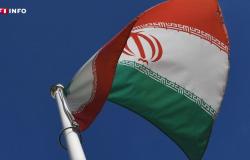In the early morning of November 11, 1918, the German plenipotentiaries signed the Armistice in Marshal Foch’s command wagon, installed in the Rethondes clearing in the Compiègne forest. At 11 a.m., the “cease fire” sounded victorious across the entire front, putting an end to four years of a terrible war. The signing of the Armistice marks the end of the fighting of the First World War, the victory of the Allies and the total defeat of Germany. The peace treaty will then be signed in Versailles, on June 28, 1919. A treaty which will truly put an end to the state of war.
106th birthday
The November 11 ceremonies celebrate the armistice of the First World War. In Menton, the commemoration of the 106th anniversary began at Place des Victoires where ten wreaths were laid at the foot of the war memorial, including that of the City by the mayor, Yves Juhel, accompanied by elected officials from the municipal youth council and students from local schools. A ceremony between homage and transmission. A new duty of memory to never forget that 106 years ago, the country mourned its dead, cared for its wounded, bandaged its wounds…
Duty of lucidity
« The pride of victory is mixed with the procession of shadows of those “perished on the ground”, accompanied by those who mourn them. It is these sacrifices that we commemorate today, to which have been added since 2012, that of all those who died for France. Honoring their memory means listening to what they still tell us today. They leave us with a duty of gratitude, lucidity and hopedeclared the 1st deputy, Patrice Novelli, reading the message from the Minister of the Armed Forces and Veterans.
The duty of lucidity is not to forget that 21 years after the guns had fallen silent, it was necessary to take up arms again in 1939. The conjunction of cowardice and blindness transformed the “Der des ders” into a “twenty-year armistice” to use the words of Marshal Foch. At a time when the tragedy of war has made a comeback in Europe, at a time when certain powers are calling into question all the foundations of international order and law, those of 14 and those of all wars murmur to continue to defend peace. »
The flag bearers then led the procession to the Sacré-Cœur church where Father Michel Maignant celebrated the thanksgiving mass. In front of the church’s war memorial, the mayor and the vicar paid tribute to the people of Menton who lost their lives during the Great War.
The War Memorial
Inaugurated on June 3, 1928 at Place des Victoires, the War Memorial in memory of the victims of the conflict is one of the most imposing in France considering the size of the city. The “Winged Victory in bronze on an Ionic column with an inverted capital” was born ten years after the end of the 14-18 war, “in memory of the brave children of the country who died for France while preparing for victory”. A victory which, in the unconscious of Menton, is the symbol of the city’s attachment to France. Country that she joined in 1861, barely more than half a century earlier…
Antoine Sartorio
The town owes its construction to the mayor François Fontana, the marble worker Jules Molinari, the quarryman Paul Molinari, the entrepreneur Vendôme Viale as well as the sculptor Antoine Sartorio. This artist, born in Menton in 1885, earned his title of official sculptor of the Great War on the Eastern Front as a simple soldier. From 1918, Antoine Sartorio specialized in monumental art which began with the creation of war memorials requested by many French municipalities.
He notably created the cenotaph presented at the funeral wake on July 13, 1919 under the Arc de Triomphe in Paris. Among his civil works, let us cite the Mirabeau bridge over the Durance, the facade of the Palais de la Méditerranée in Nice, the monument for the centenary of the founding of Brazil, the decorations of the Palais de Chaillot in Paris and the bas-reliefs of the palace of justice of Menton.





